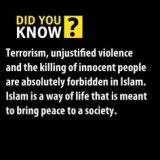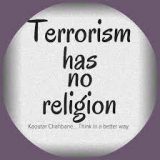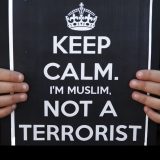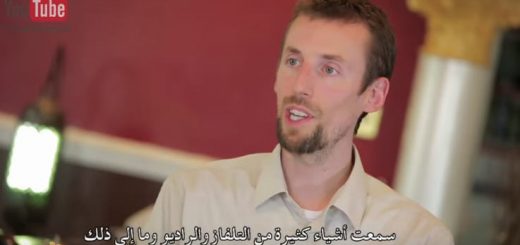Prophet Muhammad on Peace and Social Justice
Prophet Muhammad on Peace and Social Justice
Dr. Farhat Naz Rahman
(M.A, LLB, PhD)
Associate Professor and Incharge,
Islamic Studies Department,
Sir Syed University of Engineering and Technology Karachi,
Pakistan.
Cell: 0300-2264061
Email: rahmanfarhat@hotmail.com
Postal address: B2/20, Al Ahram Plaza, Block 13 A, Gulshan-e-Iqbal,
Karachi, Pakistan.
1
Abstract
In the modern times Islam is being projected as intolerant towards other faiths and
religions. We come across instances of suicide bombers and others killing
innocent people almost on daily basis. In the light of Seerah of the True
Messenger of Allah, can it be justified? What does Prophet Muhammad’s life
teach us? What is the ideal versus reality?
This article intends to briefly look at the ideas of peace and justice in Islam and
explore their deeper significance in the life of a Muslim. It will discuss and
highlight the different aspects of Prophet Muhammad (pbuh) life and deeds in
respect to the peace and social order in present scenario. The messages of the
Prophet whichwould be viewedand analyzed inthis study havemultipurpose
implications both for the Muslim world and the Western world. World peace
needs a proper code of conduct and role model. The teachings of the Prophet
provide the desired code of conduct (i.e. the law) and the life of the Prophet is the
reference point, the role model. The textual messages in this research are the
speeches and treaties that the prophet had with his counterparts, companions and
followers. In addition, his orations or sermons that he delivered to address the
mankind in general. His skillful use of rhetoric demonstrated his commitment for
meaningful competent communication for humankind in general. His speeches
demonstrated that he sought to see all humankind from the lens of kindness,
modesty, moderation, justice, liberty, gentility, generosity and love. The paper
focuses on the argumentthat the basic teachings of the Quran and the Prophet
(SAW) are not inconsistent with modern charters of United Nations. The paper
also makes appropriate suggestions for the world social order.
Key Words: Peace, Justice, Islam, Prophet Muhammad, Tolerance, Equality
2
Prophet Muhammad on Peace and Social Justice
The world today is far from modest. Political factions and all sorts of social and
economic discrimination have segmented the human race. Injustice is very
widespread on this earth. There can be no peace without the firm establishment of
justice. The more you see injustice, the more you realize the importance of
establishing justice in the land. When mankind lacks guidance on how to live their
lives, the entire structure of societyis damaged. Allah (swt) has sent down the
Quran as guidance for all of mankind, with all the rules and regulations we need
to stay on the right track. Islam is a very complete way of life. Every rule that is
good for humanity has been ordained in the Shariah of Allah (swt). Everything we
need, in order to live successfully, can be found in the Quran. Amongst these very
important divinely instructed laws is the law of establishing justice.
Islam the very name of which means “peace” submission to the will of Allah and
ladder on which man can always keep rising morally and spiritually is at all
related to tolerance.
The Quran attaches great valueto peace. Peace at the expense of justice is not
acceptable to the Quran. These two issues peace and justice are not only
correlated but complementary to each other.
Allah says in the Quran:
“Allah commands justice, the doing of good, and liberality to kith and kin, and
He forbids all shameful deeds, and injusticeand rebellion: He instructs you,
that you may receive admonition.” (Al Quran; 15:90)
Establishing justice is the law of Allah (swt). It is part of the balance which Allah
has created as justice lead to the peace in the society. The essence of justice is the
3
recognition that all humans are equal and it means creating harmony. Once we
accept the principle of human equality, then we need to reject all racism,
nationalism, and ethnocentrism. This is something some people find difficult to
accept; but that is the one remedy leading us towards justice and peace.
The findings on the Prophet’s values of moderation revealed that he placed a lot of
weight on justice. Let’s begin from the world’s first charter, treaty or constitution
or the document of peace called Mesaq-e-Medina when first Islamic State was
established in Medina by the Prophet Muhammad (SAW) after Hijrat (migration
from Mecca).
The Medina Charter, written and promulgated by Prophet Muhammad for the
multi-religious ten thousand-strong citizens of the city-state of Medina in 622 A.D
is truly a remarkable political-constitutional document. The claim made by
Professor M. Hamidullah that it was the first written constitution 1 in the world is
not without basis. Aristotle’s Constitution of Athens,2 written on papyrus,
discovered by an American missionary in Egypt in 1890 and published in 1891,
was not a constitution. It was an account of the constitution of the city-state of
Athens. Other legal writings on the conduct of ancient societies have been found,
but none can be described as a constitution. The Medina Charter is the first, and in
this it preceded the American Constitution of 1787, considered by Western
authorities as “a landmark document of the Western world … the oldest written
national constitution in operation” 3 by more than a thousand years! It also
preceded the English feudal bill of rights, the Magna Carter of 1215, by almost six
centuries.
1 The First Written Constitution in the World by Dr Muhammad Hamidullah published by Sh. Muhammad Ashraf, Lahore, 1968. 2 Translated by Frederic G. Kenyon, Internet. !996 The Avalon Project. 3 3The New Encyclopaedia Britannica, 15th Edition, 1991. 4
Although the Charterconsists of 47 clauses,but due to different numbering,
Prof. Hamidullah counts it to be 52. 4
The Constitution of Madinah which the Prophet drew up with the multi-
religious community of Madinah, soon after his arrival there, remains a shining
model for communities that strive for social justice to this day. It was a
magnificent historical document, authored and dictated by Prophet Muhammad. This
document securedand promoted cooperationand alliance amongall peopleof any
creed, color, ethnicity, and lineage. And it set down the criterion of righteousness as
thebasis ofdistinction.Ialso guaranteedthefreedom ofworshipto allreligious
communities. And the spirit evidenced there shone into the hearts of all the followers
of the Prophet. That is the spirit of equity, tolerance and understanding. The Prophet
insisted that the lack of tolerance towards the non-Muslims, under Islamic rule,
is a grave offense.
Prophet Muhammad (peace be upon him) was able to establish a model society
based in Madinah, on the firm foundation of universally-recognized moral
principles. Among these principles, equality and justice were given supreme
importance; and this is evident in the life and practice of the Prophet.
This agreement between the first Muslim community and the Jewish
community in Medina shows the sense of justice portrayed in the Prophet’s
character in dealing with minorities. It also clearly shows that the Prophet did
not spread Islam, even in the city of Medina, by force; on the contrary, he
promoted peaceful co-existence with followers of other faiths, especially Jews
and Christians.
“Let it be known, if any one (Muslim) commits injustice, insults, aggravates,
mistreats, or abuses a person of the People of the Book (protected, by the state
4 The First Written Constitution in the World, p. 9. The translation of the whole text for A. Guillaume’s Life of Muhammad is appended at the end. pp. 19-20
5
or an agreement), he will have to answer me (for his immoral action) on the
Day of Judgment.” (Abu-Dawud).
Peace in society depends on peace within us. According to Prophet
Muhammad: we must foster the sense of justice within ourselves by creating
harmony between our emotions of anger and greed on one the hand, and our
reason and intellect on the other hand; between the physical dimension and the
spiritual dimension.
Ajustpersonisonewhocontrolshisanger andhisgreedbythepowerof
reasoning. This act of controlling one’s anger and greed by the power of reason
has been described by Prophet Muhammad as “the major jihãd”.
The Prophet of Islam was ahead of his times in promoting peace and justice in
society and in true sense he was the pioneer of justice and peace in the world. It
would be worthwhile to look at how he dealt with non-Muslims minorities and
withthe enemiesduring thewar timebecause thetrue worthof asociety
manifests when it is put under pressure.
The Prophet and his followers were migrated to Medina due to the maltreatment
of Quresh of Mecca where the Muslims were minority. When the torture became
unbearablehemigratetoMedina,acityinnorthernArabia,mostofwhose
inhabitants had already accepted Islam. Once he settled in Medina, the Prophet
realized that there was a minority Jewish community in that city that had no
inclination to accept Islam. He met them and invited them to a pact with the
Muslims so that each religious group in Medina knew its rights and obligations as
well as limitations. Some relevant part of the charter reads as follows:
– The Jews who enter into this covenant shall be protected from all insults
and vexations;they shall have anequal right as ourown people to our
assistance and good offices. The Jews of the various tribes…and all other
6
non-Muslim residents of Medina shall form with the Muslims one
composite nation
– They shall practice their religion as freely as the Muslims.
– The allies of the Jews shall enjoy the same security and freedom. The
guilty shall be pursued and punished. The Jews shall join the Muslims in
defending Medina against all enemies. The interior of Medina shall be a
sacred place for all who accept this Charter. The allies of the Muslims and
of the Jews shall be as respected as the principal parties of this Charter.
Mesaq-e-Medina was no doubt the important document in the Muslim history as
itestablishedrulesof conductinsocietyandprovidedthe Muslimsasecure
atmosphere in Medina but on the other hand one cannot ignore the significance of
the Treaty of Hudaybia which placed a remarkable document of peace in the
history as it enabled the Muslims of Medina to be relieved from pressure and fear
for at least ten years from their traditional enemies in Makkah.
Following theexample of ProphetMuhammad (s.a.w.) manyrulers in Muslim
history maintained peaceful and cordial relations with their non-Muslim citizens.
If we were to compare the attitude of the Muslim rulers towards the minorities
living under their rule during the nineteenth century—with the attitude of the
Europeans and the Americans towards their minorities, I dare to say that the
record of the Muslims would be much better. Professor Roderic Davison, a
prominent historian of the Ottoman Empire, writes, “It might in fact have been
argued that the Turks were less oppressive of their subject people than were
Prussians of the Poles, the English of the Irish, or the Americans of the Negroes…
There is evidence to show that in this period [i.e., late 19th century], there was
7
emigration from independent Greece into the Ottoman Empire, since some Greeks
found the Ottoman government a more indulgent master [than their own Greek
government].”5
If one study the medieval history of Europe, one will see that the only model
of a peaceful multi-cultural and multi-faith society was Spain under the Muslim
rule—a Spain in which Christians, Jews and Muslims lived in peace and harmony.
Prophet Muhammad’s Last Sermon
The sermon was delivered on the Ninth Day of Dhul-Hijjah, 10 A.H. (632 CE) in
the ‘Uranah valley of Mount Arafat in Makkah. It was the occasion of the annual
rites of Hajj (the pilgrimage). It is also known as the Farewell Pilgrimage.
The charter of the UN on Human Rights was written in the 40’s, but the human
rights in Islam were recognized, declared and executed for over 1400 years. Every
place one reads in the farewell sermon of the Prophet Muhammad, will find
clearly the declaration of human rights. This declaration is summarized as
follows:
1. Freedom to all
2. Sanctity of life, wealth and property
3. Equality of all races
5 Roderic H. Davison, Reform in the Ottoman Empire 1856-1876 (New Jersey: Princeton University Press, 1963) p. 116.
8
4. Justice in front of the law and in front of ALLAH
5. Women’s rights and obligations. They were to be treated as partners but not as
subjects.
6. No exploitation or monopoly. The rich is not to be richer while the poor is to be
poorer.
7. Rights of others are to be preserved and to be delivered.
8. People are to take this declaration seriously, they are to preach it and to practice
it too, everywhere they go or move.
9· Sanctity of Life and Property
The sanctity of life and property was pronounced clearly by the Prophet (saw) in
his farewell speech. People are to be protected, their lives are to be preserved and
their properties are to be saved.
10· Abolition of Usury
The concept of economic exploitation is totally prohibited in Islam. Usury is a
form of economic exploitation; therefore, Islam prohibited this type of business.
Because of such economic monopoly and exploitation in a capitalistic system, the
rich will become richer and the poor will become poorer.
11· Rights and Duties of Man and Women
9
In his farewell speech, the Prophet Muhammad (SAW) spelled out the best
declaration for women’s rights. He demanded that the husbands should treat the
wives with kindness and gentleness. Men are to know that their women are their
partners.
In short, throughout the emphasis is on building cordial social relations; between
man and wife, between individual members of the community and between all
sections andclasses of thesociety.These directives aimat forging a mutually
cordial and trustworthy community life, ensuring peaceful co-existence among all
the constituents ofthe society. Social justice isdistinctly the unmistakable and
overarching tenor of the Sermon.
Charter of Privileges with the monks of Mount Sinai.
In 628 C.E. Prophet Muhammad (s) granted a Charter of Privileges to the
monks of St. Catherine Monastery in Mt. Sinai. It consisted of several clauses
covering all aspects of human rights including such topics as the protection of
Christians, freedom of worship and movement, freedom to appoint their own
judges andto own and maintaintheir property, exemption frommilitary
service, and the right to protection in war.
Instructions related to neighbors and prisoners of war.
An Islamic injunction about loving and caring for a neighbor covers all kinds of
neighbors irrespective of religion:
“Worship Allah and do not associate anything with Him, and begood to the
parents and to the relatives, the orphans, the needy, the neighbour who is your
relative, the neighbour who is not your relative, the fellow traveler, the
10
wayfarer and the slave. Verily Allah does not love one who behaves proudly and
boastfully.” (Surah an-Nisaa, 4:36)
Even if a Muslim’s parents are non Muslims, Islam – the religion of monotheism–
instructs him to respect and be kind to them. Almighty Allah says in the Qur’ãn:
“And if they [that is, your parents] insist on you to associate (an idol) with
Me… then do not obey them; however, live with them in this world kindly…”
(Surah al-Luqman, 31:15)
The Quranic instructions regarding the maintenance of justice when dealing with
the enemies is noteworthy.
“O you who believe, be maintainers of justice (and bearer of) witness for (the
sake of) Allah. Let not hatred of a people incites you to act unjustly; be just—
this is nearer to righteousness. And fear Allah surely Allah is aware of what
you do.” (Surah al-Maida, 5:8)
The first battle in the Muslim history is of significant value. It took place in the 2nd
year Hijra between the Muslims of Medina and the polytheists of Mecca. Even
though outnumbered and ill-equipped, the Muslims defeated the Meccans and
took seventy prisoners of war.
The norm among all societies at that time was to either kill the POWs or make
them slaves. But Prophet Muhammad instructed the Muslims to treat the POWs
humanely; they were brought back safely to Medina and given decent lodging in
the houses of the people who had taken them prisoners. The Qur’ãn decreed that
the POWs must not be maltreated in any way.
The way the Prophet dealt with the prisoners was very revolutionary. The poor
prisoners werereleased free; those whocame from wealthyfamilies of Mecca
were returned for a specified ransom (Fidya). (See the Qur’ãn: Surah Muhummad,
47:4) But the most interesting case was of those prisoners who were literate – the
Prophet Muhammad made a deal with them that they could go free if they could
11
teach ten Muslim children how to read and write. Even the rules of engagement
during war are also important. Whenever Muslims embarked on the minor jihãd, a
defensive jihãd, the Prophet Muhammad (peace be upon him) had standard
instructions regarding non-combatants and also the environment:6
◊ “Do not violate the treaties.”
◊ “Do not kill an old person or a child or a woman.”
◊ “Do not cut down a tree.”
◊ “Neither burn down the palm-trees nor drown them with
water.”
◊ “Do not cut down a tree bearing fruits.”
◊ “Do not drown the plantations.”
◊ “Do not poison the water of the infidels.”7
According to a Western biographer of Prophet Muhammad, Sir William Muir,
“In pursuance of Mahomet’s commands, the citizens of Medina…received the
prisoners and treated them with much consideration. ‘Blessings be on the men of
Medina’, said one of the prisoners in later days, ‘they made us ride, while they
themselves walked, they gave us wheaten bread to eat when there was little of it;
contenting themselves with dates.” 8
All this was done fourteen hundred years ago; long, long before the Geneva
Convention came about.
6 Justice, Peace and Prophet Muhammad by Sayyid Muhammad Rizvi Published by: North American Shia Ithna-Asheri Muslim Communities (NASIMCO) 2006
7 ibid
8 ibid
12
The Prophet was careful in taking all measures to avoid dispute, anger, or other
negative feelings between him and others. In fact the essence of the Quranic
view was: “Here is a Prophet living in your midst exemplifying the truth of all
the earlier scriptures. This book and this Prophet came to confirm the truth of
all the revelations before them or the truth of all revealed religions.”
John Davenport in his book mentioned that
“The Holy Prophet Muhammad was the greatest pioneer of religious freedom and
tolerance. When I say it, I literally mean it, for it would take history more than
1000 years to produce anything, remotely equal to the covenant that he gave to
the Christian monks of Mount Sinai and to the Christians in general, in generosity
and tolerance.By thegrace ofAllah I havefound thecomplete recordof the
Covenant in Christian sources.” 9
About our belovedProphet (Allah’s blessings andpeace be with him), George
Bernard Shawin “ The Genuine Islam”, 1(936, vol. 1 No. 8) had this to say: “I
believe that if a man like him were to assume the dictatorship of the modern
world, he would succeed in solving the problems in a way that would bring it the
much needed peace and happiness.”
Conclusion
9 John Davenport. An apology for Mohammed and the Koran London : Dryden Press. 1869. Pages 147-151
13
Islam is now living through a major shift. The Islamic civilization has crumbled,
and the traditional institutions that once sustained and promulgated Islamic tenets
—and marginalized Islamic extremism—have been shattered.
We need more than ever before, to study and follow the exemplary pattern that
the Prophet (SAAS) has set for us. We are indeed at crossroads. Time has come to
apply the ideals of Islam and demonstrated in practice.Those of us who are in
spiritual and moral slumber need to reconsider our thoughts and reshape our lives
in the light of the Seerah to head towards the just society.
Those extremists who indiscriminately hurt and kill innocent civilians, needs to be
challenged. The challenge should be imposed on both extremists i.e. The Muslims
as well as the fundamentalist Christians of southern US who based their
arguments ontheologicalgrounds whileinvading theMuslim countriesand
declare it a ‘Just War’ after 9/11.
In which direction we are proceeding? We must take a pause and raise this
question to ourselves so that we direct our lives in the direction we wish.
Certainly if do not do this today, we shall never be able to do it tomorrow.
References
14
1. Davenport, John “An apology for Mohammed and the Koran London”:
Dryden Press. 1869. Pages 147-151
2. Davison, Roderic H., Reform in the Ottoman Empire 1856-1876 (New
Jersey: Princeton University Press, 1963) p. 116.
3. Dr. Hamidullah, “The First Written Constitution in the World”, Published
by Sh. Muhammad Ashraf, Lahore, 1968.
4. Rizvi, Sayyid Muhammad “Justice, Peace and Prophet
Muhammad” Published by: North American Shia Ithna-Asheri Muslim
Communities (NASIMCO) 2006.
5. ibid
6. ibid
7. The New Encyclopaedia Britannica, 15th Edition, 1991.
8. The First Written Constitution in the World, p. 9. The translation of the
whole text for A. Guillaume’s Life of Muhammad is appended at the end.
pp. 19-20
9. Translated by Frederic G. Kenyon, Internet. 1996 The Avalon Project.
15
Number of View :1779












